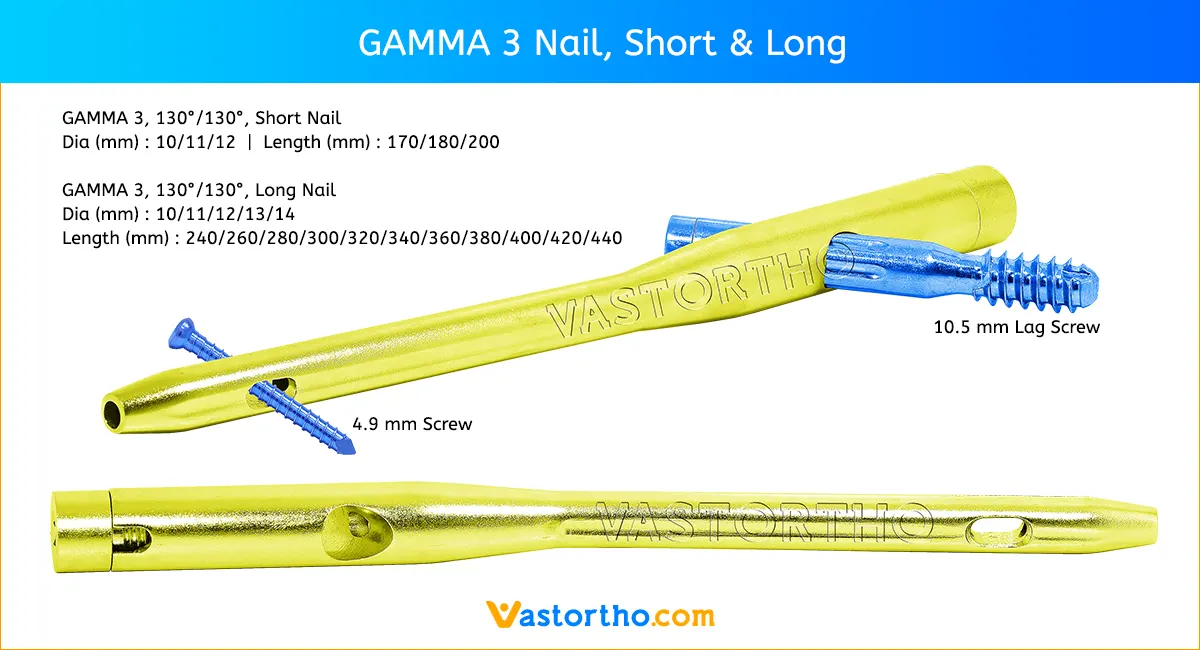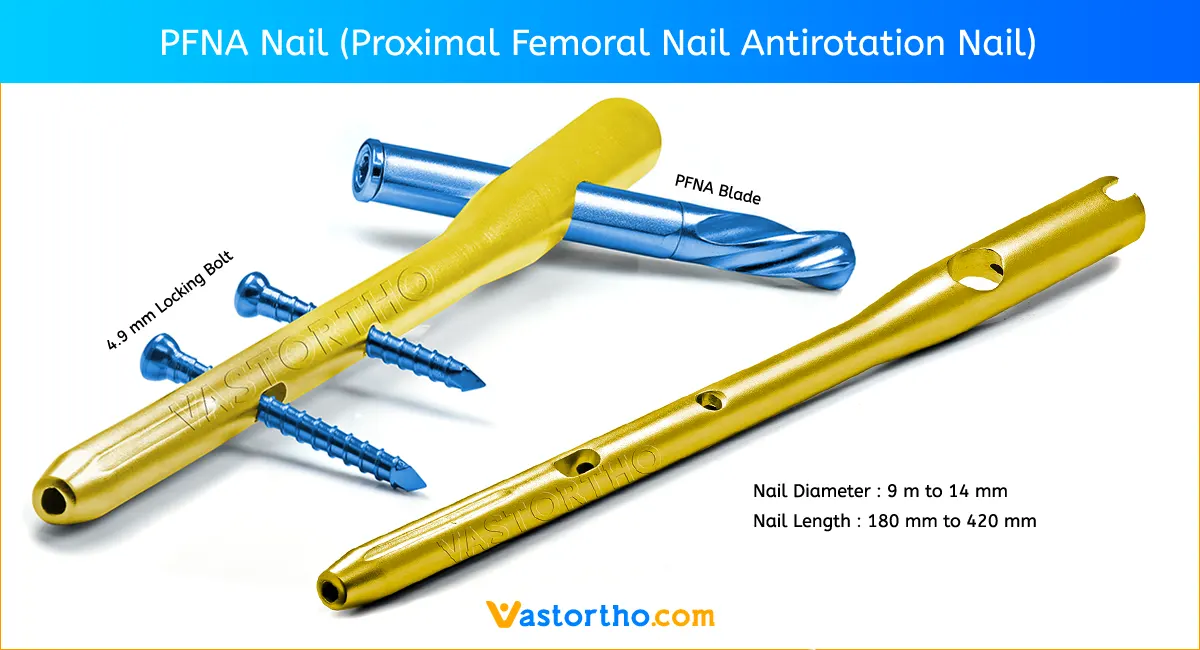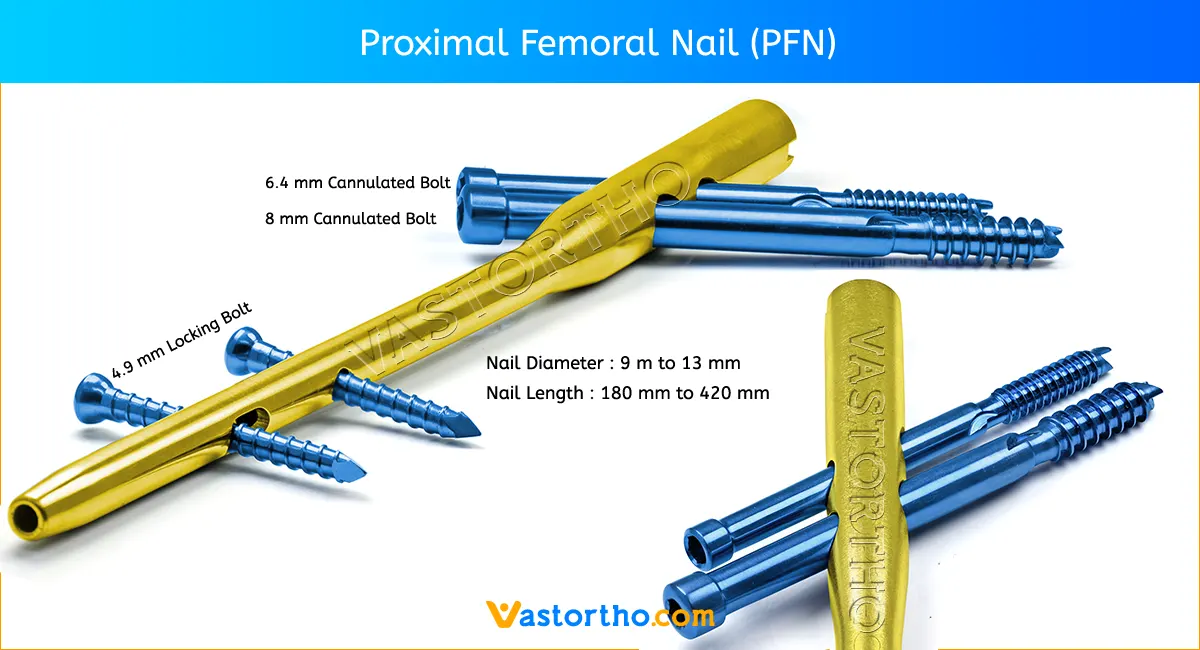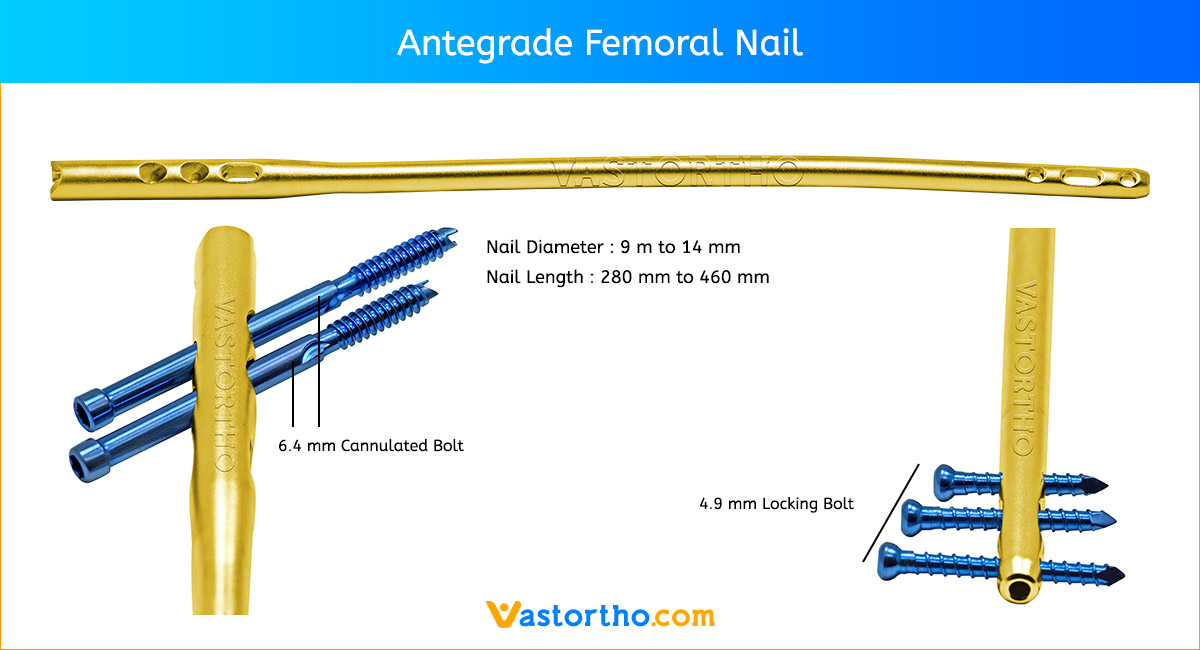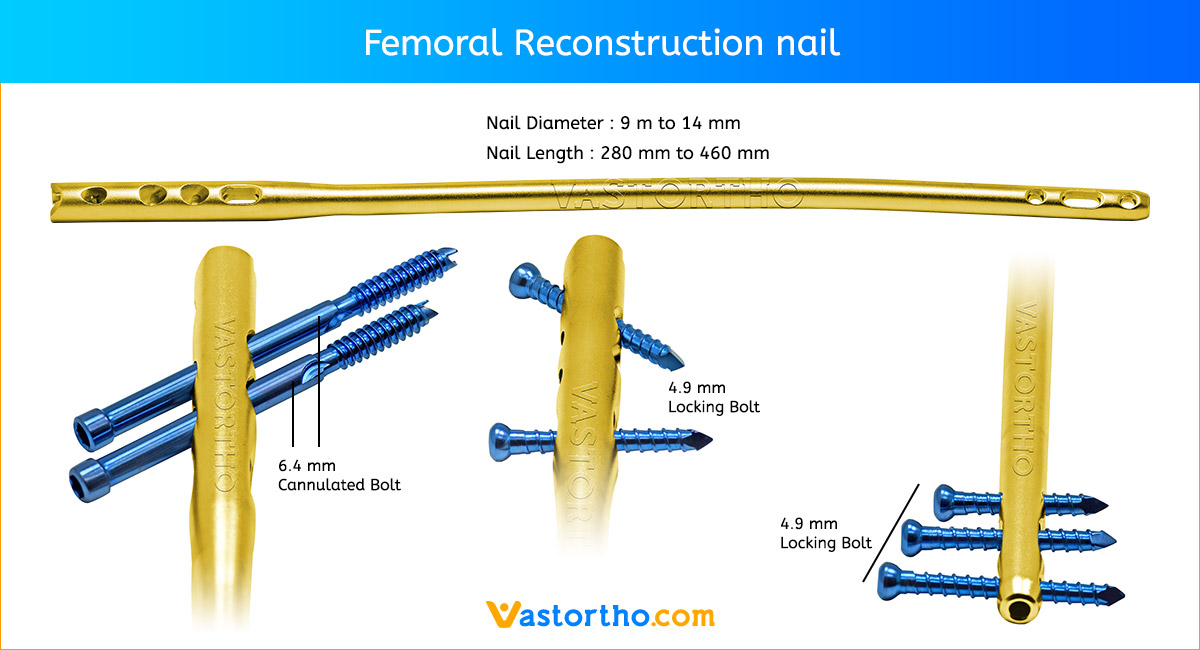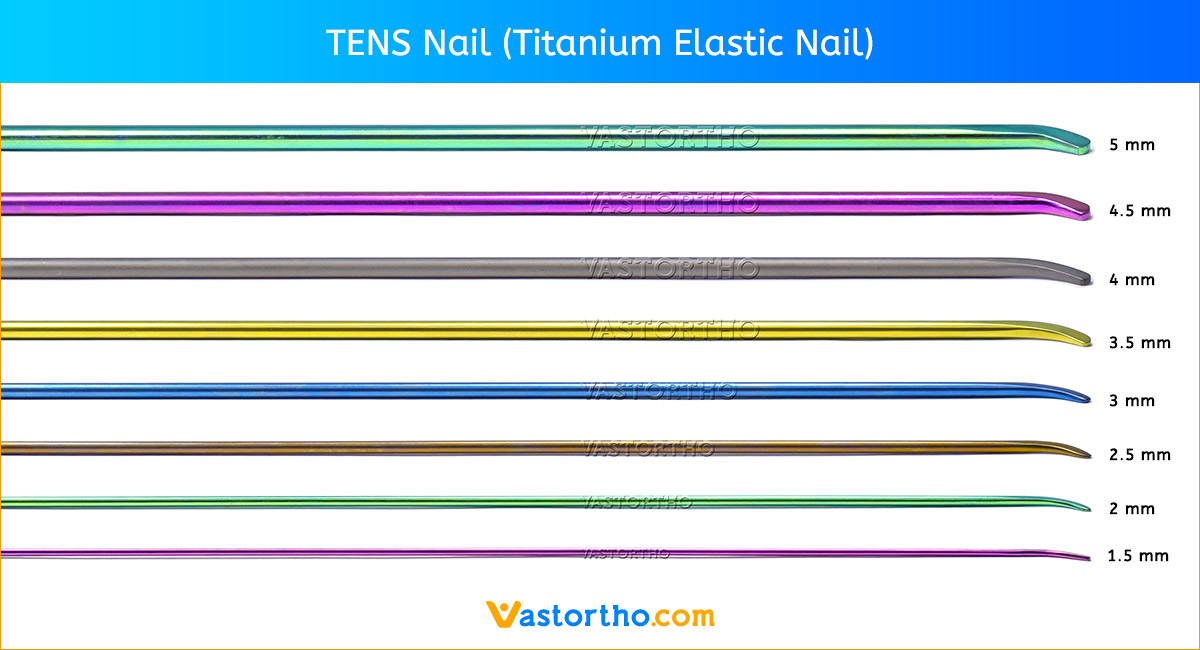Humeral (Humerus) Nail Specification, Uses, Sizes and Surgical Techniques.

Humeral (Humerus) Nail System offers the competitive advantages of:
- Brief operative time
- Minimal morbidity
- Early return to function of the extremity
- In 90% of the cases, no external support is needed
- Closed technique
- Low infection rate
- Very good pain relief in stabilization of pathological fractures
Compared to Plate and Screw Osteosynthesis :
- Minimal damage to muscle, connective tissue and vasculature
- Reduced periosteal stripping and concomitant soft tissue damage
- Fewer radial nerve palsies
- Designed for load sharing instead of load bearing
- Cosmetically smaller incision
Humeral (Humerus) Nail System is the realization of superior biomechanical intramedullary stabilization.
The system offers the option of different locking modes :
• Static, transverse/oblique
• Dynamic
• Apposition/compression
• Advanced locking
In some indications, a controlled apposition/compression of bone fragments can be applied by introducing a compression screw from the top of nail. To further increase rotational stability, the nail can be locked after utilizing the apposition/compression feature.
The compression screw is pushed against the proximal Partially Threaded Locking Screw (Shaft Screw) that has been placed in the oblong hole, drawing either the distal or the proximal segment towards the fracture site. In stable fractures, this has the biomechanical advantage of
creating active circumferential compression to the fracture site, transferring axial load to the bone, and reducing the function of the nail as a
load bearing device.
This ability to transfer load back to the bone can reduce the incidence of implant failure secondary to fatigue. Typical statically locked nails functioning as load bearing devices have reported failure rates in excess of 20%.
Common 4mm cortical screws simplify the surgical procedure. Fully Threaded Locking Screws are available for regular locking procedures.
Partially Threaded Locking Screws (Shaft Screws) are designed for application of apposition/compression.
One common Humeral Compression Screw to close the fracture site, and End Caps in six sizes are available to provide an improved fit for every indication to allow nail length adaptation after insertion and to prevent bone ingrowth.



